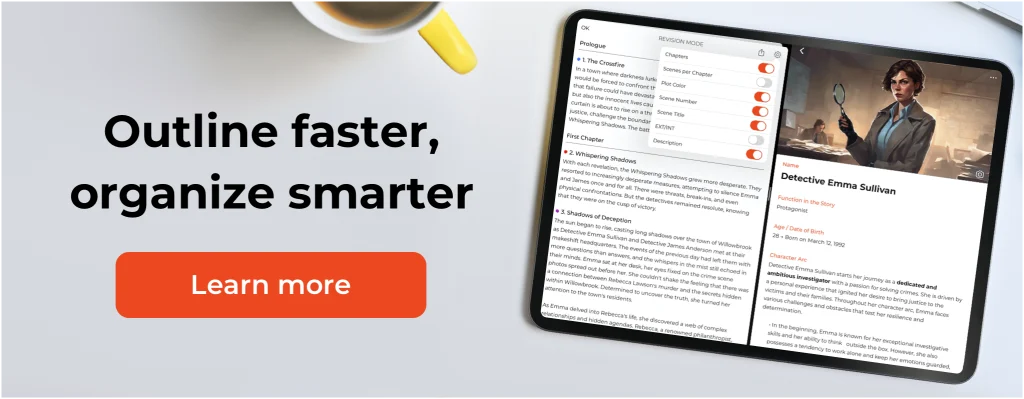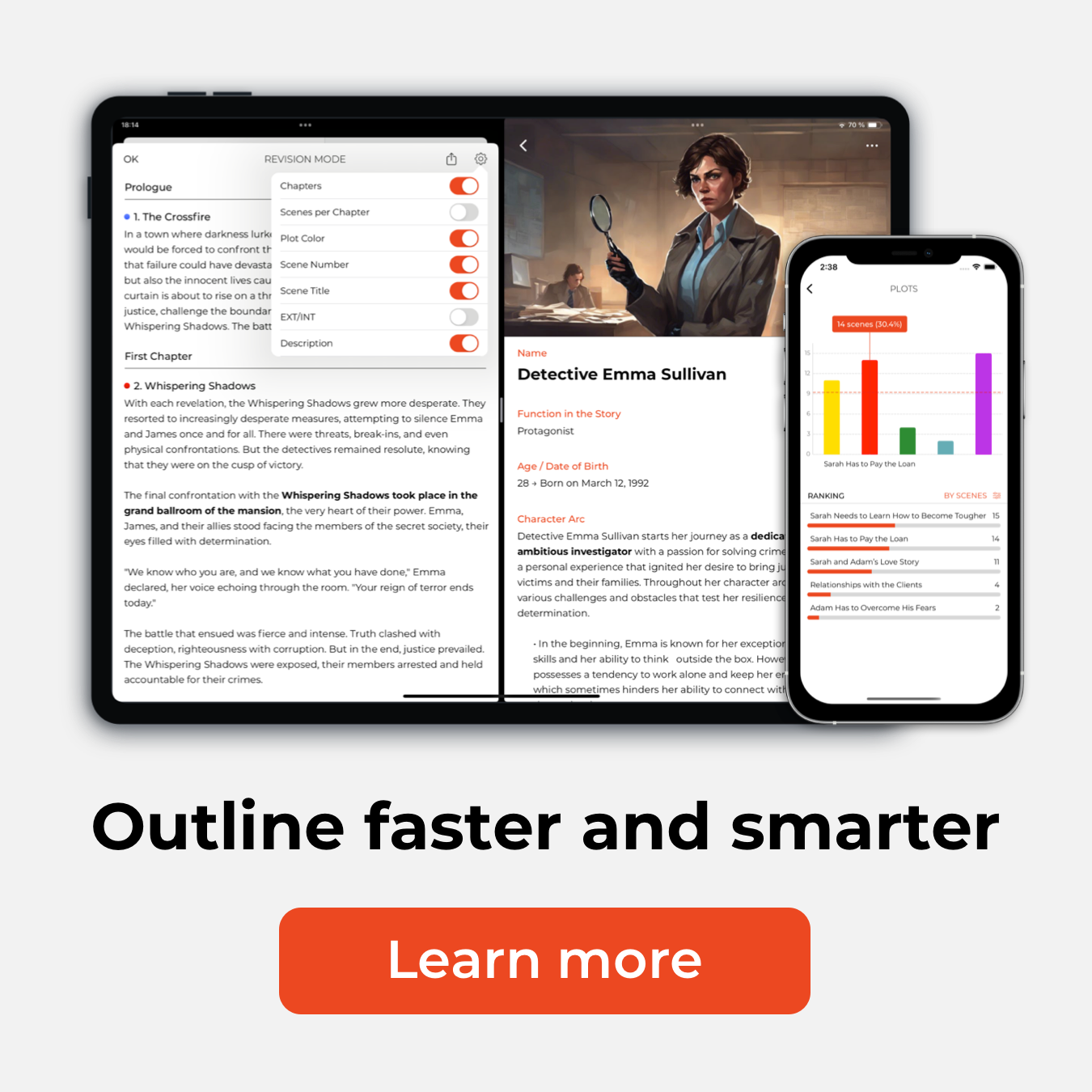The third-person narrator is not a character that is part of the plot, but rather a voice outside the story that tells us the story from outside it. There are two types of third-person narrator, depending on their perspective and objectivity:
- The third-person omniscient narrator
- The third-person limited narrator
- The third-person objective narrator
Just as first-person and second-person narrators, third-person narrators also present advantages and disadvantages. Below, I will analyze them in more detail to gather all possible information when choosing which narrator to use.


Third-Person Omniscient Narrator
The third-person omniscient narrator is the most classic of all existing narrators. It is the typical narrator of 19th-century novels, as well as all those bed stories we heard when we were children that begun with “Once upon a time.”
This narrator is called omniscient because it knows and sees everything about all the characters. It knows what has happened, what is happening, and what will happen. This narrator is like a god; it knows everything about all the characters and can predict the future, assume, and even judge.
Let’s look at the main characteristics of this type of narrator:
Overall Perspective
The omniscient narrator knows all the story details, so it can tell how the characters feel, and the reader has more information about the scene than those who star in it.
This ability can be useful for telling a story but also has drawbacks if we want to hide certain information and show others. Writers have to know how to play with this voice so that it does not seem like they are cheating.
Unambiguous
Since this narrator has all the information about the plot, their job is to explain and tell all the characters’ reactions, emotions, and thoughts. With an omniscient narrator, there is not as much room for ambiguity as with other narrators.
For example, an omniscient narrator who describes the conversation between two characters cannot tell us the thoughts of one of the participants in the dialogue and not the other to wait for the readers to draw their own conclusions. If an omniscient narrator provides all the relevant information about character A, they must also provide it about character B, since the narrator knows that information.
Credibility
As a consequence of the previous points, the omniscient narrator becomes an authority when telling the story. There is no reason to doubt their words, as could happen with a first-person narrator, especially if it is a witness narrator.
🎯 Pro Tip: Readers question less what an omniscient narrator tells them, and that is why this narrator may be an interesting option for magical or fantasy stories.
The Author’s Voice
As long as this type of narrator remains neutral and limits itself to explaining the story, readers will not question who is speaking. But if the omniscient narrator makes some value judgment, readers may feel that the author is actually telling the story.
Freedom
Being an all-seeing, all-knowing narrator makes the story structure more flexible, allowing the story to shift between different places, times, and characters. Unlike the first-person narrator, the omniscient narrator is not limited to what a single character sees or knows.
Distance
Unlike a first-person or third-person limited narrator, the omniscient narrator does not focus as much on the protagonist and maintains a certain distance from the plot, making the reader’s closeness to the main character less immediate than with other narrators.
Examples
Some examples of the third-person omniscient narrator are Jane Austen’s Pride and Prejudice, Frank Herbert’s Dune, and Neil Gaiman’s Stardust.
📚 Excerpt of Stardust by Neil Gaiman: Even today, two townsmen stand on either side of the opening, night and day, taking eight-hours shifts. They carry hefty wooden cudgels. They flank the opening on the town side.Their main function is to prevent the town’s children from going through the opening, into the meadow and beyond. Occasionally they are called upon to discourage a solitary rambler, or one of the few visitors to the town, from going through the gateway.The children they discourage simply with displays of the cudgel. Where ramblers and visitors are concerned, they are more inventive, only using physical force as a last resort if tales of new-planted grass, or a dangerous bull on the loose, are not sufficient.
Third-Person Limited Narrator
Unlike the omniscient, the third-person limited narrator focuses its perspective on one of the characters in the novel. It is actually a false first-person narrator because it tells us the story from that character’s point of view, but in the third person.
It is a very versatile narrator, which allows you to have the advantages of a first-person narrator, but maintaining a certain distance from the character, and allowing the narrator’s voice to remain more neutral. If the protagonist is a four-year-old girl, the third-person limited narrator will explain her thoughts and emotions, but this narrator does not need to express themself like a four-year-old girl.
Let’s analyze the main characteristics of this narrator:
Limited Perspective
Unlike the omniscient, this narrator is limited to one of the characters and, therefore, cannot know what the others think or what their real motivations are.
Ambiguous and Suggestive
The limited perspective of this narrator allows for an objective explanation of what happens to a character. Still, it requires the narrator to make suggestions or deduce the other characters’ experiences from the perspective of the character the narrator knows. As a result, the narrator’s vision of the behavior of the different characters and events will be subjective, consisting of conjectures and suggestions.
A Greater Connection
This narrator focuses on a character and their emotions, creating a direct closeness with the reader, and allowing a greater connection. Although it is a third-person narrator, the reader will identify more quickly with this character, as if it were a first-person narrator.
Multi Perspectivism
Like the first-person narrator, the limited third-person narrator has the handicap of limiting itself to a single character, so we cannot narrate what happens to other characters in other places.
However, the limited third-person narrator works very well when applying multi-perspectivism: Switching between characters from one chapter to another, as occurs in the Game of Thrones novels by George R.R. Martin or in the science fiction saga The Expanse by James A. Corey.
📚 Excerpt of Leviatan Wakes by James S.A. Corey: Jim Holden saw some poetry in that.”Holden?”He turned back to the hangar deck. Chief Engineer Naomi Nagata towered over him. She stood almost two full meters tall, her mop of curly hair tied back into a black tail, her expression halfway between amusement and annoyance. She had the Belter habit of shrugging with her hands instead of her shoulders.”Holden, are you listening, or just staring out the window?”
Third-Person Objective Narrator
The third-person objective narrator is less commonly used in fiction and is more typical of journalistic texts. This type of narrator is objective, simply reporting things as they are seen without delving into the opinions or thoughts of the characters. It’s like a camera that sees and shows without making judgments. Its main characteristics are:
Present Tense
The main characteristic of this type of narrator is that it is written in the present as if it were happening now.
Objectivity and credibility
By maintaining a distance and sticking to reporting what you see, you establish complete credibility. This kind of narrator convinces us that we are witnessing events as they unfold.
Coldness and Distance
This type of narrator creates a sense of detachment from the characters’ emotions and establishes distance from the plot.
Freedom Without Emotions
Like the omniscient narrator, the objective narrator can jump to any setting or time without needing to justify this jump. This narrator can tell us what they want and where they want, but without losing their objectivity or entering into the characters’ emotions.
It is not an easy narrator to find in novels, but there are still interesting cases to read, such as The Hive by Camilo Jose Cela. Here you have an excerpt from this novel:
📚 Excerpt of The Hive by Camilo Jose Cela: A young woman, who’s almost grown past that definition, calls the cigarette boy.”Padilla!””Coming, Señorita Elvira!””Give me a Tritón.”The woman rummages in her bag, filled with tender, dishonest old letters, and puts thirty-five cents on the table.”Thank you.””No, thank you.”She lights the cigarette and puffs out a large mouthful of smoke, a distant look in her eyes. After a while, she calls the boy again.
